This document is a scrapbook project analyzing media coverage of terrorist attacks around the world. It finds that Western media provides far more extensive coverage of attacks against white Westerners, including personal details of victims to elicit empathy, while coverage of attacks against black or Arab victims is brief and devoid of such details. It also notes greater social media solidarity for attacks in Western countries. The document examines several pairs of attacks that occurred close in time but received highly disproportionate coverage based on the race of the victims. It discusses how such biased coverage perpetuates dehumanization of non-Western victims and selective sympathy for Western victims.
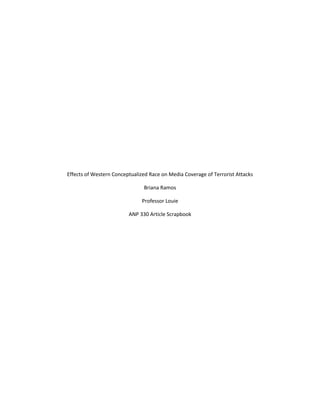





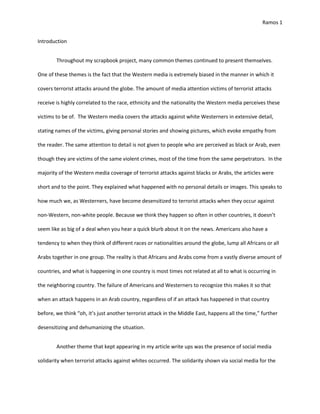




























![4/21/2016 Ethiopia attack: 200 people dead, 100 children missing AJE News
http://www.aljazeera.com/news/2016/04/ethiopiaattack200peopledead100childrenmissing160418045025770.html 1/23
Engagement: 55238
WAR & CONFLICT
Ethiopia attack: 200 people dead,
100 children missing
Death toll rises from cross-border cattle raid as government says more than 100
children were taken by attackers.
18 Apr 2016 15:04 GMT | War & Conflict, Africa, Ethiopia
Topics: Syria's Civil War US Election 2016 Middle East Ecuador
Afghanistan
Al-Aqsa 360: Inside Jerusalem
Take a tour of Islam's third holiest site
WATCH NOW
News
TV SCHEDULE
People & Power [IN 19 MIN.]
Nepal: After the Earthquake
How are people faring a year after the disaster?
NEWS PROGRAMMES OPINION INVESTIGATIONS
ABOUT
Watch Live](https://image.slidesharecdn.com/d11b657c-bea0-47c9-8bcc-cd0698e11d99-160429013725/85/Briana-final-36-320.jpg)


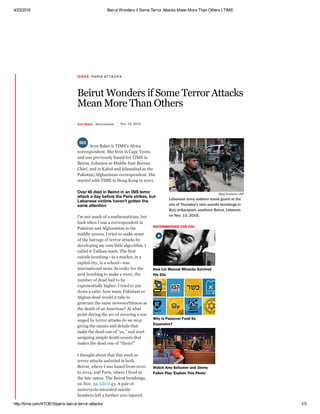







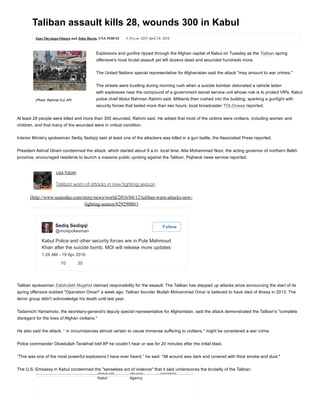
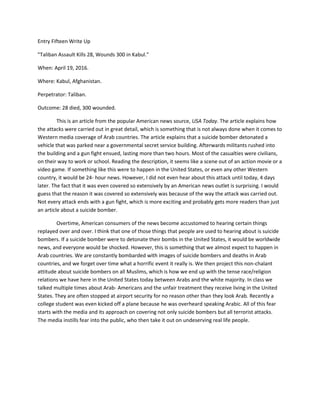





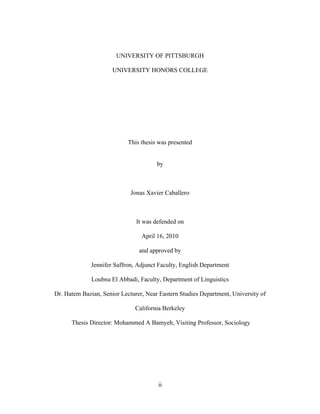







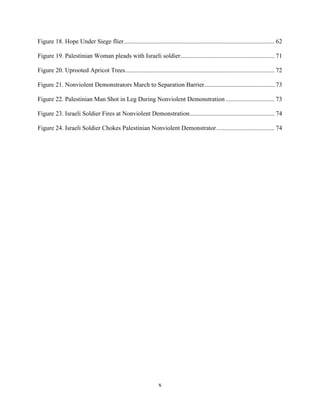



![2
qualitative study” (Weir 5). Specifically, IAK examined the extent to which the media covered
Israeli deaths over Palestinian deaths, and compared their findings to the actual data from the
B’Tselem. In each study, IAK discovered that every media outlet studied revealed “a pervasive
pattern of distortion” with regard to their coverage of the Palestine/Israel conflict (Weir 6).
In their books, Israel-Palestine On Record and The Record of the Paper, Richard Falk
and Howard Friel reported similar findings. In these books and the studies conducted by IAK,
the researchers analyzed the Times’ media coverage from long periods of time [IAK: Sept. 2000
– Sept. 2001 and Jan. 2004 – Dec. 31 2004; Falk/Friel: 2000 – 2006]. Although this is a
relatively small segment of time compared to the overall history of the Palestine/Israel conflict, it
still provided a long enough period of time to reveal and assess the patterns of bias existing in the
outlets (Falk and Friel 1).
During these periods, however, there is no study that analyzes the Times’ coverage of
deaths and casualties that happen during specific incidents. On one day, for example, forty
civilians may be killed in an air strike in the Gaza Strip, while there may be no deaths on the
following day in the West Bank. Although the bias that has been found and analyzed in the IAK
and Falk/Friel studies proves that distortions of the truth do exist over the specific date ranges,
no study of media bias has been made with regard to isolated, catastrophic events. My study
focuses on the impact of a catastrophic event upon the Times’ coverage of the event, and the
resulting effects on its pro-Israeli media bias. This study highlights a specific case study:
Operation Cast Lead, Gaza Strip [12/27/2008 - 1/18/2009]. The investigation was designed to
determine whether the Times’ media bias continued, diminished, or increased during this period.
By combining qualitative (content analysis) with quantitative (statistical data)
approaches, this study examines the Times’ manner of covering the Palestine/Israel conflict,](https://image.slidesharecdn.com/d11b657c-bea0-47c9-8bcc-cd0698e11d99-160429013725/85/Briana-final-66-320.jpg)





![8
3.0 NOT SO FAIR AND BALANCED
Media Bias, Audience, Group Representation, Framing, and Agenda Setting
Israel is the largest recipient of U.S. foreign tax aid, about $3 billion per year (“U.S. Military Aid
and the Israel/Palestine Conflict”). An estimate of the total cost to Americans is $3 trillion, an
amount “four times greater than the cost of the Vietnam War” (Stauffer). Given the history of
U.S. involvement in the conflict, both in financial linkage and in occupying a long-time role as
mediator [Camp David, Oslo Accords, etc.], continuous study and scrutiny of the role of the
media is particularly important (Ismail 254). Furthermore, in acknowledging that the U.S. is
“firmly committed to Israel’s security and to her military superiority in the Middle East,” it is
pertinent that American newspaper readers receive a clear and unaltered picture of the conflict
(Aruri 20).
However, post 9/11 discourse in the Western media, especially with regard to the
Palestine/Israel conflict, has led to an increased bias (Zuhur 40). When the media construct
reality as a “given,” presenting their information simply as “the way things are,” a more critical
eye for seeing through this constructed reality is necessary. This is where critical discourse
analysis (CDA) enters (Cameron 123). When applying CDA, systems begin to emerge from
within the texts which help to propose “an interpretation of the pattern, an account of its meaning
and ideological significance” (Cameron 137). If the reader of the Times, however, receives his or
her news from that medium only, then there is no alternative frame of reference or “reality” to](https://image.slidesharecdn.com/d11b657c-bea0-47c9-8bcc-cd0698e11d99-160429013725/85/Briana-final-72-320.jpg)










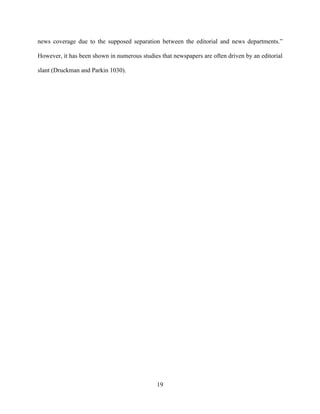






![26
this observation that led Weir to found IAK—to “provide this information to the public, as well
as to undertake a systematic study of U.S. media coverage of Israel/Palestine” (Weir 5).
5.2 IF AMERICANS KNEW AND THE TIMES
The studies by IAK prove the existence of a pro-Israel media bias in the pages of the Times and
other media outlets. A “media report card” was issued by IAK regarding the Times’ coverage of
the first year [September 2000 through September 2001] of the Palestinian uprising. IAK
examined the headlines, first paragraphs, and article entireties, studying the coverage of
Palestinian and Israeli deaths during that period of the conflict. IAK found that the Times
“significantly distorted” these number of deaths, reporting Israeli deaths “at a rate 2.8 times
higher than Palestinian deaths.” In a 2004 follow-up study, IAK sought to investigate whether
the Times’ pattern of distortion, discovered in their previous research, “continued, diminished, or
increased.” What IAK found was that the rate of distortion increased by 30%.
As a subcategory, IAK studied the coverage of children’s death caused by the conflict.
According to their findings, the Times’ “coverage of children’s deaths was even more skewed.”
Again, the rate of distortion in covering children’s deaths increased from 2000 to 2004, reporting
Israeli children’s deaths “6.8 times the rate of Palestinian deaths” in 2000 to “7.3 times greater
than the deaths of Palestinian children” in 2004 (“Off the Charts”). In her study, Ismail stated
that, although “child victimization in the conflict remained vivid,” the blame for Palestinian
children deaths was “inconsistent across the two sides” (Ismail 258).
As previously mentioned in the Times’ code of ethics, the newspaper purports to cover a
topic responsibly and accurately. To challenge this claim, the “media report cards” of IAK are](https://image.slidesharecdn.com/d11b657c-bea0-47c9-8bcc-cd0698e11d99-160429013725/85/Briana-final-90-320.jpg)


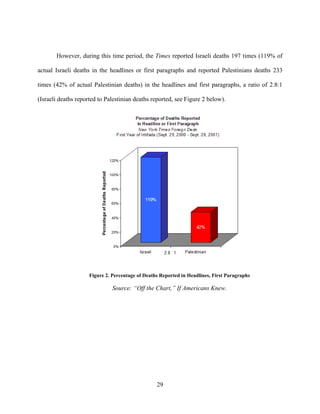














![44
‘Israel,’ ‘Palestine,’ ‘Israeli,’ ‘Palestinian,’ ‘Gaza,’ ‘Gaza Strip,’ and ‘Operation Cast Lead’ for
the period of the invasion [12/27/2008 – 1/18/2009]. I also analyzed an additional week after the
end of the operation as it allowed for the incorporation of the immediate aftermath of the
operation and updated numbers of casualties.
Each article was read before including it in the sample sets to ensure that it dealt with the
catastrophic event itself, rather than with an extraneous issue related to the conflict, such as the
visit of an American diplomat to the region. In the end, ninety-one articles were selected from
the Times’ news and editorial pages. The coding was straightforward: a tally was made for each
time an article mentioned an Israeli death or Palestinian death in the headlines, first paragraphs,
and in the article as a whole. Tallies were also made for each time the article referenced an
Israeli or Palestinian child’s death in the headline or first paragraph, and the article’s entirety.
The same procedure was done regarding references to Palestinian and Israeli injuries in the
headline, first paragraphs, and entirety.
Similar to the methodology used by IAK, this study applies the statistical data compiled
by B’Tselem of the deaths and injuries of Palestinians and Israelis during Operation Cast Lead.
Although content analysis can be a subjective experience, focusing on B’Tselem’s data helps to
minimize the subjectivity in this study.
Additionally, tallies were made for each time the article mentioned weapons being fired
from Palestinians into Israel. Key words such as ‘rockets,’ ‘Qassam,’ ‘mortar shells,’ and
‘missiles’ were included in these tallies. This aspect of the study connotes a more qualitative
approach for it compares these numbers with statistical data regarding the number of deaths and
injuries of Israelis and Palestinians. Comparing the number of references to rockets helps to](https://image.slidesharecdn.com/d11b657c-bea0-47c9-8bcc-cd0698e11d99-160429013725/85/Briana-final-108-320.jpg)




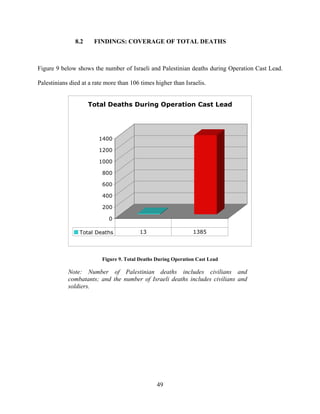







![57
9.0 ANALAYSIS
The Impact of Catastrophic Distortion
The procedures enacted in my study ensured a design that was as objective as possible, similar to
the studies done by If Americans Knew. IAK’s yearlong analysis of the Times’ coverage of the
Palestine/Israel conflict [Sept. 2000 – Sept. 2001] revealed that the newspaper covered 119% of
Israeli deaths and 42% of the deaths of Palestinians in the headlines and first paragraphs. Israeli
deaths were covered almost 3 times more than the deaths of Palestinians. In IAK’s 2004 study,
the Times’ distortion increased, covering 149% of Israeli deaths and 41% of Palestinian deaths in
the headlines and first paragraphs. The Israeli deaths were covered 3.6 times more than the
deaths of Palestinians. My study of the Times’ coverage of Operation Cast Lead, however,
reveals that the Times covered Israeli deaths 12 times more than the deaths of Palestinians in the
headlines and first paragraphs (38% of Israeli deaths were covered and only 3% of Palestinian
deaths were covered). In reality, 13 Israelis were killed and over 1,385 Palestinians were killed.
Furthermore, analysis of the full articles during Operation Cast Lead revealed that the Times
reported 431% of Israeli deaths and only 17% of Palestinian deaths, a ratio of 25 to 1.
In IAK’s 2000-2001 analysis of the Times, the group found that 125% of Israeli
children’s deaths were reported in the headlines and first paragraphs, while only 18% of
Palestinian children’s deaths were reported. In the 2004 analysis, IAK found that 50% of Israeli
children’s deaths were reported in the headlines and first paragraphs and 7% of Palestinian](https://image.slidesharecdn.com/d11b657c-bea0-47c9-8bcc-cd0698e11d99-160429013725/85/Briana-final-121-320.jpg)


























![4/21/2016 Why Charlie Hebdo Gets More Attention Than Boko Haram | TIME
http://time.com/3666619/whycharliehebdogetsmoreattentionthanbokoharam/ 2/3
just weeks before Nigeria’s 2015
presidential election. Boko Haram,
like many Islamist fundamentalist
groups, oppose democratic elections.
MORE 5 facts that explain the threat
from Nigeria’s Boko Haram
Yet after the overwhelming global
show of support for France in the
wake of the Paris attacks, many are
asking why there wasn’t similar
widespread solidarity for Nigeria
where far more people were killed.
The hashtag #IamBaga, a variation on #JeSuisCharlie, has recently begun circulating to
call attention to the massacre in Baga, a slaughter that Amnesty International is calling
the group’s “deadliest act.” A Catholic Archbishop in Nigeria has called on the world
community to support Nigeria the way it supported France. But even if you consider the
brief blast of global awareness during last spring’s #BringBackOurGirls campaign, these
calls to action seem feeble compared to the millions of marchers and more than 40 world
leaders who flooded the streets of Paris this weekend.
No major dignitaries showed up in Abuja to support the Nigerian government after the
Baga attack. In the week since the attack on Charlie Hebdo, the French terror plot has
been the main headline in the national edition of the New York Times every day, but the
most recent Boko Haram attack hasn’t appeared once on the front page. It wasn’t on the
cover of the New Yorker. Nobody wore #IamBaga buttons at the Golden Globes.
Of course, the two tragedies are incomparable, as tragedies usually are. The reports
coming out of Baga are still sketchy, and there’s not yet an official death toll because Boko
Haram still controls the area. The details of the Charlie Hebdo attacks were immediately
available, and were accompanied by compelling video that quickly dominated every major
news network. French President Francois Hollande is somewhat unpopular, but at least
he responded quickly and effectively to the attack. Nigerian president Goodluck Jonathan
has been widely criticized for his incompetence at stopping Boko Haram– Jonathan
released a statement condemning the Paris attacks, but his government reportedly played
down the death toll in Baga. More importantly, the attack in Paris was largely
unprecedented (Charlie Hebdo was firebombed in 2011, but nobody was hurt), while the
massacre in Nigeria is part of a long string of Boko Haram attacks that some are even
calling a “war“: the group killed over 10,000 people last year, according to the Council on
Foreign Relations, and 1.5 million have fled their homes since the insurgency started.
Plus, the fact that the Charlie Hebdo attack was a dramatic ambush of journalists may
have added a layer of panic to the media coverage.
“The psychological distance between us and France is smaller than the psychological
difference between us and Nigeria,” explains Paul Slovic, a professor of psychology at
University of Oregon and president of Decision Research, a nonprofit research institute
that studies decisionmaking. “There’s a sense of personal vulnerability [in the Paris
attack] that I don’t think one gets from the Boko Haram attacks,”
MORE How we failed the lost girls kidnapped by Boko Haram
A recent Pew survey tracking American news interest in foreign terrorist attacks found
that Americans were overwhelmingly more interested in attacks that happen in other
Western countries or attacks on children. The 2005 train bombings in London and the
2004 killing of Russian children by Chechen rebels were the most closely watched by
Americans (48% saying they’d followed each event closely), followed by the 2004
bombings in Madrid and the 2007 car bomb scare in London (34% said they followed
those stories). 29% of Americans closely followed the most recent Paris attacks.
The only terrorists attacks in nonWestern countries that got significant American
attention were attacks on destinations that attract affluent visitors. For example, 29%
said they closely followed the 2008 attack of Mumbai’s Taj Hotel. 25% followed the
attack on an upscale mall in Nairobi, Kenya in 2013, and 20% followed the bombing of a
nightclub in Bali, Indonesia in 2002. Recent terrorist attacks in Afghanistan, Iraq and at a
Pakistan school didn’t make the list.
She Smokes? 22 Shocking Celebrity
Smokers
Recommended by
Promoted](https://image.slidesharecdn.com/d11b657c-bea0-47c9-8bcc-cd0698e11d99-160429013725/85/Briana-final-148-320.jpg)













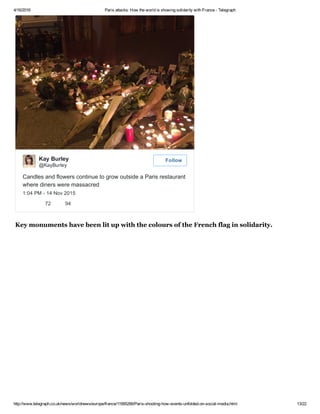


























![4/20/2016 Why did the world ignore Boko Haram's Baga attacks? | World news | The Guardian
http://www.theguardian.com/world/2015/jan/12/spbokoharamattacksnigeriabagaignoredmedia 2/3
“I am Charlie, but I am Baga too”
1I am Charlie, but I am Baga too,2 wrote Simon Allison for the Daily Maverick, a partner on
the Guardian Africa network. 1There are massacres and there are massacres2 he said,
arguing that 1it may be the st century, but African lives are still deemed less newsworthy
– and, by implication, less valuable – than western lives2.
Allison recognises the challenges in reporting – 1the nearest journalists are hundreds of
kilometres away2 – but also points to the significance of the attack: taking control of Baga,
1Boko Haram effectively controls Borno state in its entirety. These aren4t just terrorists:
they are becoming a de facto state.2 Even more reason for the world to take notice.
But the blame does not just lie with western media; there was little African coverage either,
said Allison. No leaders were condemning the attacks, nor did any talk of a solidarity
movement, he said, adding that 1our outrage and solidarity over the Paris massacre is also a
symbol of how we as Africans neglect Africa4s own tragedies, and prioritise western lives
over our own.2
Silence from Nigeria’s politicians
Many pointed to the palpable silence of many of Nigeria4s politicians. Last week, Nigeria4s
president, Goodluck Jonathan, expressed his condolences for the victims of France but
stayed silent on the Boko Haram attacks on Baga.
Media analyst Ethan Zuckerman said that the president is 1understandably wary of
discussing Boko Haram, as it reminds voters that the conflict has erupted under his
management and that his government has been unable to subdue the terror group2.
Nigeria4s elections are set to take place on February. The president was also criticised for
celebrating his niece Ine4s wedding over weekend, in the aftermath of the killings.
Elnathan John, a Nigerian writer and lawyer who has changed his Twitter identity to 1I am
Baga2 in solidarity, shared a tweet from Nigeria4s finance minister, Ngozi Okonjo-Iweala,
who also expressed condolences over the Paris attacks but made no mention of the events
in Baga.
He also pointed to comments on the official Twitter account of Ahmadu Adamu Muazu,
from the ruling People4s Democratic party, who looked to downplay the death toll: 1We
know it4s a political period so some of this [sic] things are expected2.
Muazu has since taken to the account again to say he has been working with the security
services to ensure that 1peace will soon be restored2 to the people in Baga and other
regions in the north-east of the country.
‘The west is ignoring Boko Haram’
Ignatius Kaigama, the Catholic archbishop of Jos in central Nigeria – an area which has also
suffered terror attacks – added his voice to criticism of the west.
Speaking to the BBC, he argued that Nigeria could not confront the threat from Boko Haram
alone. 1It is a monumental tragedy. It has saddened all of Nigeria. But... we seem to be](https://image.slidesharecdn.com/d11b657c-bea0-47c9-8bcc-cd0698e11d99-160429013725/85/Briana-final-189-320.jpg)

















![4/21/2016 Ethiopia attack: 200 people dead, 100 children missing AJE News
http://www.aljazeera.com/news/2016/04/ethiopiaattack200peopledead100childrenmissing160418045025770.html 1/23
Engagement: 55238
WAR & CONFLICT
Ethiopia attack: 200 people dead,
100 children missing
Death toll rises from cross-border cattle raid as government says more than 100
children were taken by attackers.
18 Apr 2016 15:04 GMT | War & Conflict, Africa, Ethiopia
Topics: Syria's Civil War US Election 2016 Middle East Ecuador
Afghanistan
Al-Aqsa 360: Inside Jerusalem
Take a tour of Islam's third holiest site
WATCH NOW
News
TV SCHEDULE
People & Power [IN 19 MIN.]
Nepal: After the Earthquake
How are people faring a year after the disaster?
NEWS PROGRAMMES OPINION INVESTIGATIONS
ABOUT
Watch Live](https://image.slidesharecdn.com/d11b657c-bea0-47c9-8bcc-cd0698e11d99-160429013725/85/Briana-final-207-320.jpg)
![4/21/2016 Ethiopia attack: 200 people dead, 100 children missing AJE News
http://www.aljazeera.com/news/2016/04/ethiopiaattack200peopledead100childrenmissing160418045025770.html 2/23
Getachew earlier told Al Jazeera that his country's forces had killed 60 of the assailants [File Photo: Tiksa
Negeri/Reuters]
The death toll from a raid carried out by attackers from South Sudan in western
Ethiopia has risen to 208 people, an Ethiopian official said, adding that 108 children
were kidnapped.
By Sunday afternoon, the number had risen to "208 dead and 75 people wounded"
from a figure of 140 a day earlier, government spokesman Getachew Reda told the
Reuters news agency.
Women and children were among the dead, he said, adding that the assailants had
also taken 2,000 head of livestock.
"Ethiopian Defence Forces are taking measures. They are closing in on the
attackers," Getachew said.
The attack happened on Friday in the Horn of Africa nation's Gambela region which,
alongside a neighbouring province, hosts more than 284,000 South Sudanese
refugees who have fled a conflict in that country.
Getachew earlier told Al Jazeera that Ethiopian forces had killed 60 of the attackers
and would cross the border into South Sudan to pursue the assailants if necessary.
No government link
Crossborder cattle raids have happened in the same area in the past, often involving](https://image.slidesharecdn.com/d11b657c-bea0-47c9-8bcc-cd0698e11d99-160429013725/85/Briana-final-208-320.jpg)



![4/23/2016 Beirut Wonders if Some Terror Attacks Mean More Than Others | TIME
http://time.com/4113615/parisbeirutterrorattacks/ 2/3
It was a news item, to be sure, and
the worst bombing since Beirut’s civil
war ended in 1990, but one largely
reduced to geopolitics: The attack
was claimed by ISIS, or the Islamic
State, and it took place in a
neighborhood that was a stronghold
for Hizballah, which is fighting in
Syria on behalf of President Bashar
Assad, with backing from Iran.
International coverage didn’t dwell
on the fallout or the families left
behind, an omission that makes it
seem almost inevitable that it will
happen again.
Which brings us to the traumatic events in Paris on Friday night. Already the victims are
being named, their brief biographies sketched out in a way that makes this attack much
more personal. The venues are familiar, not just to me, but to thousands of tourists with
happy holiday memories of those streets and bars and clubs, and millions more around
the world who know Paris as the City of Love. Beirut is a cosmopolitan city of culture, but
not long after I arrived, I installed safety film on all my windows, to keep shards of glass
from raining down on me in the event of a bomb attack.
Much has been made of the disparity of coverage between two attacks, one day apart, and
claimed by the same terror group. I don’t know what algorithm Facebook uses to activate
its Safety Check feature, which allows users to mark themselves and others as safe in the
wake of tragedies, and why Beirut didn’t trigger it. (Facebook CEO Mark Zuckerberg said
that SafetyCheck had only been activated in the past after natural disasters, but that
going forward it will be activated “for more human disasters going forward as well.”) The
Twittersphere has lobbed, justifiably in some cases, accusations of Western bias, or
worse, racism. “Dear Facebook,” @ktbradford tweeted. “Nice French flag overlay. But
how do I change my profile picture to show solidarity with the people of Beirut?”
Whatever the reasons—and there are many—for the disparity of global reaction, the
message that emerges from these twinned events is that some lives matter more than
others. ISIS is not just a French problem, or, if the ISIS claims to have downed the
Russian airliner in Egypt are verified, a Russian problem. It is not just a Lebanese
problem. Until there is some recognition that an ISIS attack on one country is an attack
on all, ISIS will be everybody’s problem—a problem that won’t be solved.
WITNESS PARIS MOURN THE DAY AFTER DEADLY ATTACKS
21 Child Celebrities Who Kept Their
Fame [Pictures]
Recommended by
Promoted](https://image.slidesharecdn.com/d11b657c-bea0-47c9-8bcc-cd0698e11d99-160429013725/85/Briana-final-212-320.jpg)



![4/25/2016 Triple terror: Up to 60 killed, 80 wounded, 3 car bombs explode in Syrian Christian town — RT News
https://www.rt.com/news/325568terrorattacktelltamersyria/ 2/5
Aftermath of the explosions in the village of Tal Tamer in
#Hasakah which took the lives of 30 people & wounded 100+
4:12 PM 10 Dec 2015
22 4
IraqiSuryani
@IraqiSuryani1
Follow
“We could understand if they [the terrorists] were fighting with YPG, but they are devastating our city, killing small children,
destroying houses… What right do they have [to do it]? They have no right to deprive us of our homes, to bereave children of their
fathers,” a woman said in a video filmed soon after the terrorist attacks and published on YouTube by the Ajansa Hawar ANHA
news agency.
“[Islamic State militants] are killing innocent people… This is not Islam, this is irreligion… They have no compassion, no humanism
and no feelings. They are barbarians and no single religion would accept them,” an elderly man said in the same video.
ﺗﻣﺭ ﺗﻝ ﻓ ﺫ ﻹﻧﻘ ﺕ ﻋﻣﻠ ﺭ ﺳﺗﻣﺭ Li Til Temir xebatên rizgarkirinê didomin
The Kurdish security force, blamed the attack on Islamic State ﴾IS, formerly ISIS/ISIL﴿ in a statement, Reuters reports. The town of
Tell Tamer is mainly controlled by Kurdish YPG fighters battling IS in this part of Syria.
Later on Friday, IS claimed responsibility for the attack in a statement posted online, saying three of its fighters driving separate
vehicles blew themselves up while targeting "bases" of Kurdish fighters in the town, according to Reuters.
The town, also home to an Assyrian Christian community, has become a target of numerous terror attacks and incursions by
Islamic State ﴾IS, formerly ISIS/ISIL﴿ militants over the last months.
2Three suicide car bombs exploded in KurdishAssyrian town of
curdistani
@curdistani
Follow](https://image.slidesharecdn.com/d11b657c-bea0-47c9-8bcc-cd0698e11d99-160429013725/85/Briana-final-216-320.jpg)
![4/25/2016 Triple terror: Up to 60 killed, 80 wounded, 3 car bombs explode in Syrian Christian town — RT News
https://www.rt.com/news/325568terrorattacktelltamersyria/ 3/5
2Three suicide car bombs exploded in KurdishAssyrian town of
Tall Tamir.Civilian deaths are being reported #Syria
2:45 PM 10 Dec 2015
27 5
In September, IS militants organized a series of deadly terror attacks in the town of Hasakah, which killed 39 and injured more
than 100. Terrorists targeted the headquarters of the Kurdish militia and pro‐government forces, but most of the victims were
civilians, according to TASS.
In February, IS terrorists took 200 local Christians hostage and also destroyed five local churches. This caused most of the
residents to flee to nearby Hasakah, the governorate’s capital city 600km from Damascus. Kurdish forces and local fighters have
temporarily joined forces with the Syrian Army and cleared the region of IS jihadists.
The Syrian conflict has taken the lives of more than 250,000 people, according to UN estimates. The humanitarian crisis has
internally displaced more than 6.5 million Syrians and forced 4.3 million to flee the country. They have sought refuge in
neighboring countries and Europe.
READ MORE: Middle East attacks on Christians cause for concern ‐ Russian ombudsman
From The Web by Taboola Sponsored Links
Salesforce
Money.com
Morning Finance | LendingTree Quotes
Yahoo
HelloFresh
Wired for Master & Dynamic
How Lead Nurturing Works. Get the Complete Guide
Grab This Social Security Benefit Now Before It Disappears
You're In For A Big Surprise in 2016 If You Own A Home in Michigan
All You Need to Know About Reverse Mortgages on Yahoo Search
This Service in East Lansing is Changing the Way People Cook at Home
Best Wireless Headphones Ever
See Also by Taboola Promoted Links
Salesforce
The ROI of Marketing Automation [EBook]
Posting rules FAQ](https://image.slidesharecdn.com/d11b657c-bea0-47c9-8bcc-cd0698e11d99-160429013725/85/Briana-final-217-320.jpg)




